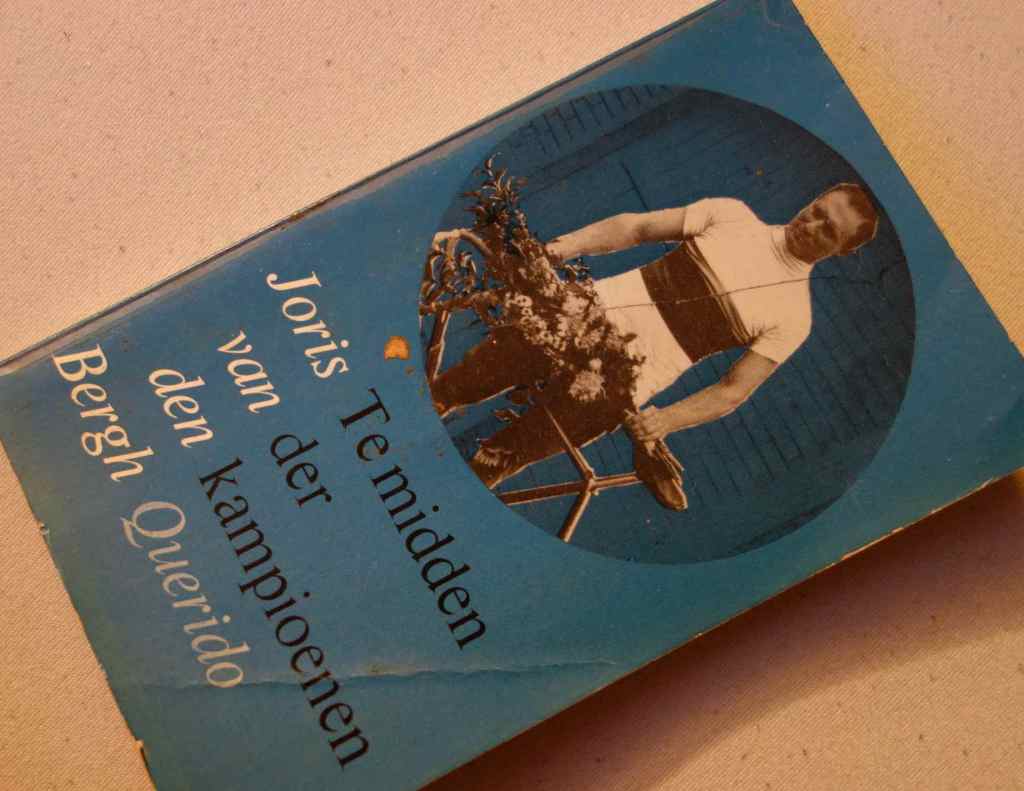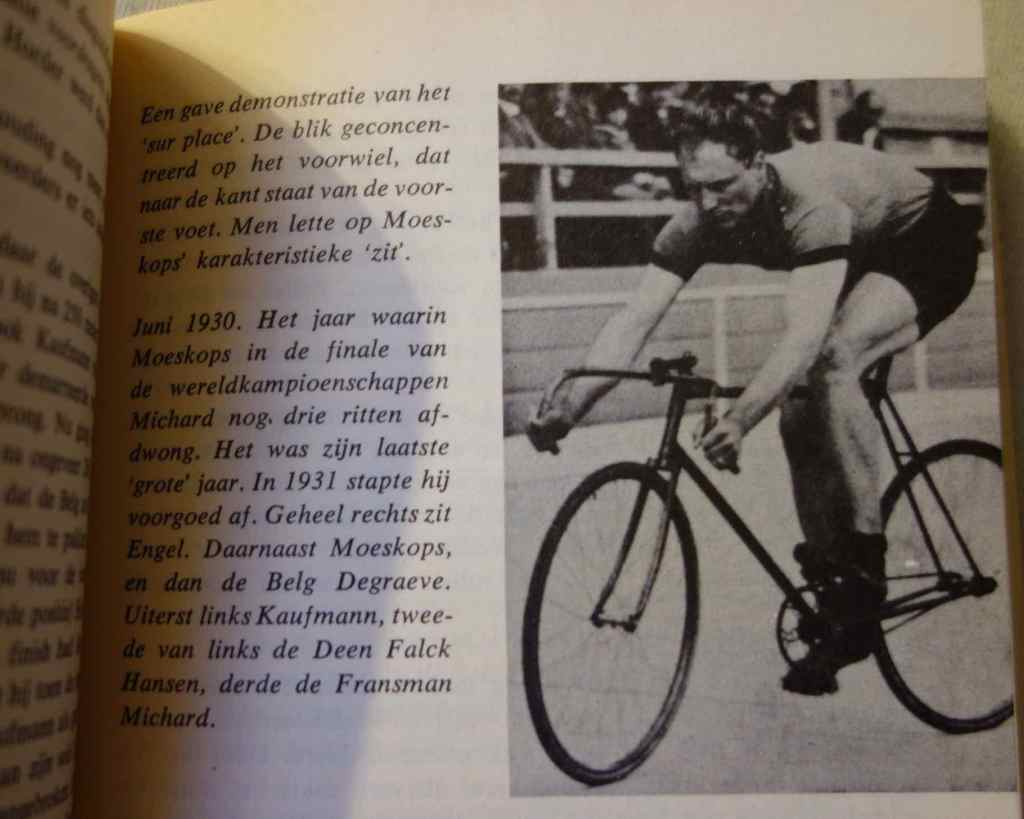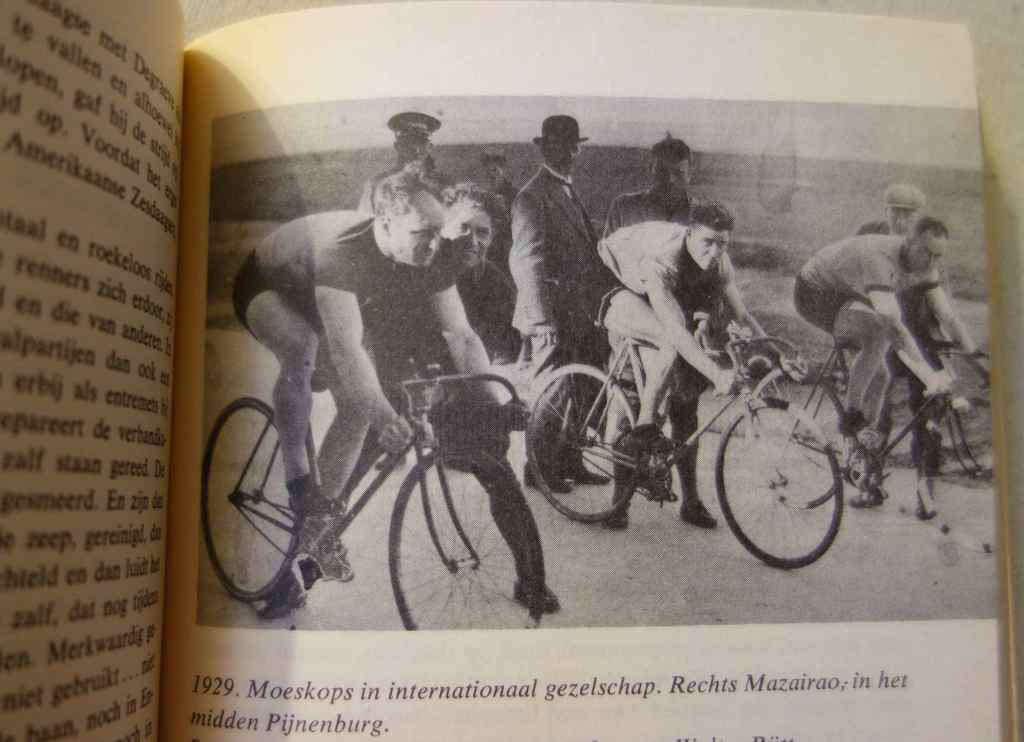It´s that time of the year, isn´t it? Sleet, rain, two deg C, ugh. No time for riding, but time for reading.

What do we have here? A fascinating book, for sure. Many people must have thought so, as it was first published in 1929, became an instant success, was edited in 1942 and my copy dates from 1964. There seems to have been yet another reprint in 1981, at least that´s what it says today on boekwinkeltjes. I got my copy about 20 years ago in a Dutch veteran bike market, and it was a lot cheaper than the 15€ people are asking on the net. For all of you who can read Dutch it must be remarked that Joris van den Bergh´s language is very distinguished, affording the reader 230 pages of pleasure.
Its author, Joris van den Bergh, can be called one of the founders of Dutch sports reporting. He had a huge knowledge of the cycle sport and also lead the first Dutch team to take part in the Tour de France, so he was quite multifaceted. His voice actually can be heard in the oldest (Dutch language) report on the TdF:
It´s not him in the picture, but this is:

Van den Bergh died in 1953, so his fame outlived him. As did Piet Moeskops (1893-1964, pronounced “Mooskops”), one of the most famous figures in 1920s track racing. Becoming sprint world champion five times (1921-1924 and 1926), and with his imposing figure that was untypically tall for a racing cyclist, he was a popular hero all during the 1920s, and Joris van den Bergh wrote the book I´m currently reading about him, two years before Moeskops finished his career in 1931.
Here are a few pix taken from the book:




Looking at the pictures I can´t help to notice that to my mind, Moeskops rode a frame that was a few cms to small for him. He had a special position on the bike for which he was known, and as in the 20s there was no scientific research on the dynamics on the bicycle, one just has to assume that he, the five times world champion, knew what he was doing.
What the book is not is a source for historic research; van den Bergh writes it like a long feature in a Saturday sports newspaper. He expects the reader to believe him and gives no sources, also not for the parts in which he describes Moeskops´ early life in which he still was out of the limelight and which v.d. Bergh did not witness.
But, you know, on a rainy January Sunday “Te midden der kampioenen” is a great way to spend the time waiting for spring.